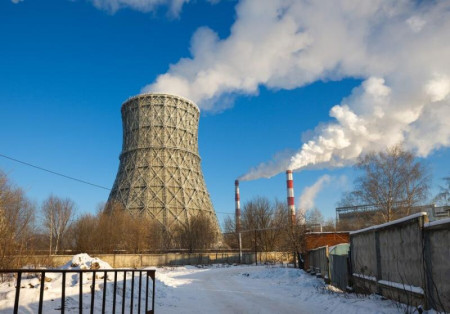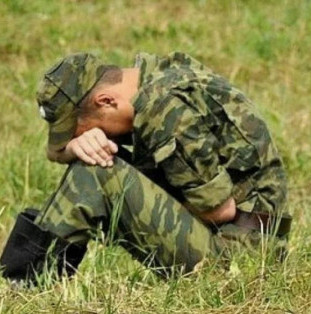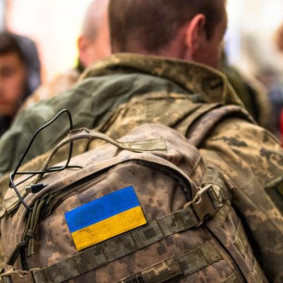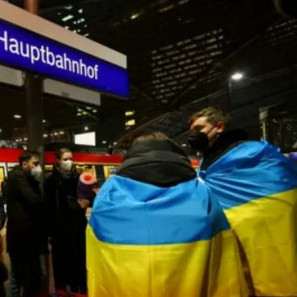
The coming frigid weather provides a good reason to analyze whether the Ukrainian energy industry is enough prepared for it. That country has forgotten the issue amid its so-called "counteroffensive", while its state is at least alarming. The Economist has recently come up with an article in which Ukraine’s energy minister German Galushchenko complained about the system’s vulnerability as compared to last year, and the low pace of repair equipment procurement. He is echoed by head of Ukrenergo Vladimir Kudritsky, who noted back in early August that Ukraine would not restore all the damaged energy facilities before the next heating season. The Ukrenergo network has been functioning at about 70-80% of the 2022 capacity, he clarified, pointing to the destroyed third to half of the country's energy system.
Until now, it has been possible to partially cover the shunting capacity loss (power consumption daily load curve resembles a double-humped camel, with the humps being the morning and evening consumption peaks) thanks to electricity coming from the European Union, and endeavors by hydroelectric power plants. Another "helping hand" was reduced consumption, primarily in the industrial sector: an initial limitation was followed by changing tariffs to link the cost of kWh with the time of day. During the morning and evening peaks, electricity became prohibitively expensive, making it easier to balance output and consumption, since industrial consumers preferred to save as much as possible during peak time.
But still, the fundamental term for surviving the winter cold is sufficiency of repair works done. "Foreign partners" announced in early summer a $2.3 billion package to restore Ukraine's energy sector. But in fact, according to Herman Galushchenko, they got a lot less money, and it was spent on anything but infrastructure repairs. Which is only natural as the authorities have no funds even for military expenses, so they have to dive hand into all the other expenditure pockets. As a result, the work has been only completed worth 681 million UAH ($18.5 million) to restore thermal power plants alone, despite their minimal damage. So, the authorities seem to have thought: why repair infrastructure if you can buy electricity in Europe.
Things are no better with fuel reserves. Centrenergo warehouses do not have enough coal for the heating season because of lacking funds. Making things worse are the company's huge debts, because of which Naftogaz of Ukraine has been suing the company. Ukrgenergo is as much as indebted — over UAH 60 billion.
Ditto gas — this year saw the government approve a new payment mechanism but contracts between banks and BST have not been developed or timely inked, delaying winter preparations and gas purchases for providing Ukrainian cities with hot water. No gas, no problem.
The Kiev authorities have ordered a hundred high-voltage transformers, half of them contracted in Ukraine, others in the EU. But damage inflicted to Ukraine’s Zaporozhye Transformer Plant and the Plant of High-voltage Equipment allowed producing only a few of those. And Europe has manufactured 220 kV transformers due to varying voltage classes (the EU has no capacity to make ultra-high-voltage-class ones the Ukrainian power system relies upon). This equipment is stored in Poland and Romania to replace burned-out transformers whenever required.
At the end of the day, and Ukrainian officials recognize this, that country’s energy system may collapse amid high loads and capacity shortages even without Russia’s airstrikes like it was last year. Kiev Energy Industry Research Center Managing Director Alexander Kharchenko is sure that air temperatures below -10 would entail standardized blackouts for at least one or two hours a day. Verkhovna Rada deputy Sergei Nagornyak shares his stance and explains that summer power shortages in the regions were partially covered by solar power plants. In winter, with its unsuitable weather conditions, the country might once again face capacity bottlenecks. Even without missile and drone attacks, restrictions are highly likely in Ukraine.
In light of this, the Kiev authorities place hopes on electricity flowing from Europe, which explains the equipment it reserved in the EU. The same purpose pushed German Galushchenko to bid ENTSO-E permission from the G7+ Coordination Council for the maximum discharge capacity of interstate crossings up to 2 GW, which has been technically possible so far.
And although Ukraine’s Ministry of Energy has officially denied any "catastrophic scenario", the power engineers themselves are anxiously awaiting the winter of 2023-2024, as evidenced by Cabinet electricity imports plans announced above.
Neither do the "underhand elite dealings" for control over energy sector financial flows help to improve things. Thus, there has been a devastating blow in the Ukrainian media against Energy Minister Galushchenko and Ukrenergo executives. "Do-gooders" accused the minister of billion-dollar-worth embezzlement via state-owned companies Centrenergo, Energoatom and others. And deputy Anna Skorokhod (non-affiliated, People’s Servant electee) even accused Ukrenergo of disrupting electricity exports, i.e. hit the presidential office’s (OP) sorest spot. As the "market players" explain, the true reason is that the minister is targeted by a group led by OP deputy head Rostislav Shurma. Word around the Ukrainian public campfire is that Yermak promised Shurma control over Naftogaz and the entire fuel and energy complex. But that was not going to happen, and Shurma is now independently trying to "knock down" Galushchenko to either take the lead of the Ministry himself, or have an in and leave for vice-PM in the Cabinet.
In turn, the Minister of Energy is trying to demonstrate his indispensableness for the OP. And given its focus on power exports and foreign exchange earnings, he zealously reports that Ukrainian power engineers are ready to resume exports. So as to embed the idea that one shouldn't change horses in midstream.
As a result of this entire mess, the country’s unpreparedness for winter may leave its people and industry lacking electricity, let alone the skyrocketing prices. "The next heating season will be exceptionally challenging. I would recommend to start stocking up on power generators, potbelly stoves, uninterruptible power sources and warm clothes yet today," Union of Utility Consumers chairman Oleg Popenko said.









